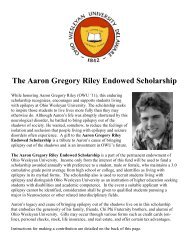Legal Rights of Children with Epilepsy in School & Child Care
Legal Rights of Children with Epilepsy in School & Child Care
Legal Rights of Children with Epilepsy in School & Child Care
Create successful ePaper yourself
Turn your PDF publications into a flip-book with our unique Google optimized e-Paper software.
The Special Education Process for <strong><strong>Child</strong>ren</strong> <strong>with</strong> <strong>Epilepsy</strong>: The Individuals <strong>with</strong> Disabilities Education Act (IDEA)<br />
A.W. v. Northwest R-1 <strong>School</strong> Dist., 813 F. 2d 158 (8 th Cir. 1987), cert. denied 484 U.S.<br />
847 (1987)<br />
Adopted the Roncker standard and discussed cost issues at length <strong>in</strong> deny<strong>in</strong>g regular<br />
education placement to student <strong>with</strong> severe mental retardation.<br />
Daniel R.R. v. El Paso Independent <strong>School</strong> District, 874 F.2d 1036 (5 th Cir. 1989)<br />
The Fifth Circuit set out a two-part test: First, can education <strong>in</strong> the regular classroom <strong>with</strong><br />
the use <strong>of</strong> supplemental aids and services be achieved satisfactorily? It is necessary to<br />
look at whether supplementary aids and services have been provided, whether the<br />
program has been modified, and whether the efforts <strong>of</strong> the district have been sufficient. It<br />
is also necessary to ask if the student will receive an educational benefit from regular<br />
education, s<strong>in</strong>ce academic achievement is not the only reason to place a student <strong>with</strong><br />
disabilities <strong>in</strong>to general education. The court also stated that it is necessary to look at the<br />
student’s overall educational experience, compar<strong>in</strong>g the benefits <strong>of</strong> special and regular<br />
education for the student, and to look at the effect <strong>of</strong> the student’s presence on the regular<br />
classroom environment and on the education the other students are receiv<strong>in</strong>g. Second, if<br />
the student cannot be educated satisfactorily <strong>in</strong> the regular classroom, has he or she been<br />
ma<strong>in</strong>streamed to the maximum extent appropriate? The court specifically notes that the<br />
IDEA does not take an all-or-noth<strong>in</strong>g approach, and that students can be placed <strong>in</strong> both<br />
regular and special education classrooms to vary<strong>in</strong>g degrees. The Daniel R.R. hold<strong>in</strong>g<br />
was reiterated <strong>in</strong> Brillon v. Kle<strong>in</strong> Independent <strong>School</strong> District, 100 Fed. Appx. 309 (5 th<br />
Cir. 2004).<br />
DeVries v. Fairfax County Board <strong>of</strong> Education, 882 F.2d 876 (4 th Cir. 1989)<br />
The Fourth Circuit essentially adopted the hold<strong>in</strong>g <strong>of</strong> Roncker v. Walter to deny<br />
neighborhood school placement to a student <strong>with</strong> severe disabilities. In Hartmann v.<br />
Loudoun County Board <strong>of</strong> Education, 118 F.3d 996 (4 th Cir. 1997), the court reiterated its<br />
DeVries decision and overturned the district court’s order <strong>of</strong> an <strong>in</strong>clusive placement for<br />
an elementary school student <strong>with</strong> autism. The court stated clearly that ma<strong>in</strong>stream<strong>in</strong>g is<br />
not required when the child <strong>with</strong> a disability would not receive an educational benefit,<br />
when any marg<strong>in</strong>al benefit from ma<strong>in</strong>stream<strong>in</strong>g would be significantly outweighed by<br />
benefits which could feasibly be obta<strong>in</strong>ed only <strong>in</strong> a separate <strong>in</strong>structional sett<strong>in</strong>g, or when<br />
the child <strong>with</strong> a disability is a disruptive force <strong>in</strong> a regular classroom sett<strong>in</strong>g.<br />
Barnett v. Fairfax County Public <strong>School</strong>s, 927 F.2d 146 (4 th Cir. 1991)<br />
The court denied home school placement to a student who used cued speech <strong>in</strong>terpret<strong>in</strong>g,<br />
f<strong>in</strong>d<strong>in</strong>g that whether a particular service or method can feasibly be provided <strong>in</strong> a specific<br />
special education sett<strong>in</strong>g is an adm<strong>in</strong>istrative determ<strong>in</strong>ation; it was acceptable for the<br />
school district to centralize its cued speech <strong>in</strong>terpret<strong>in</strong>g program at a different school and<br />
to consider cost as a factor.<br />
61








